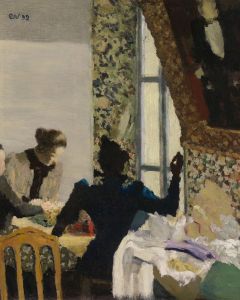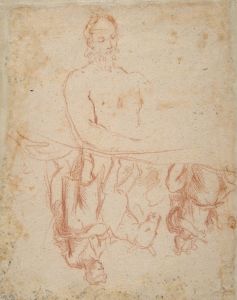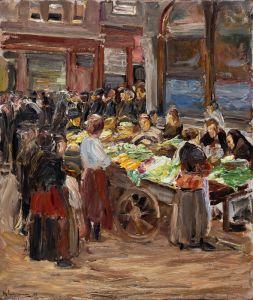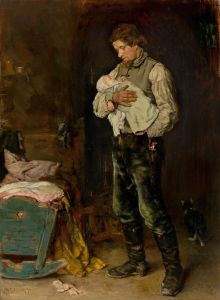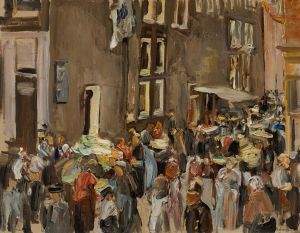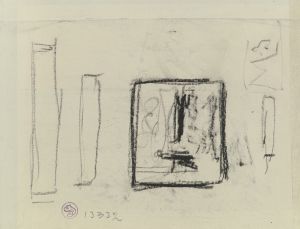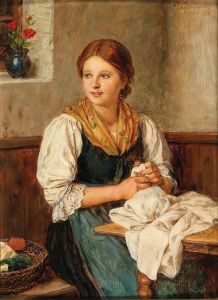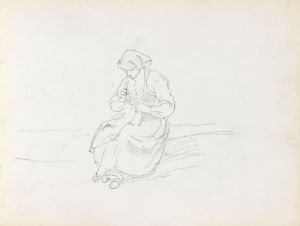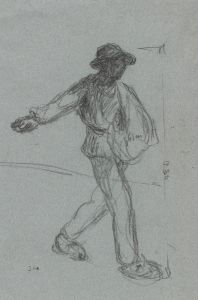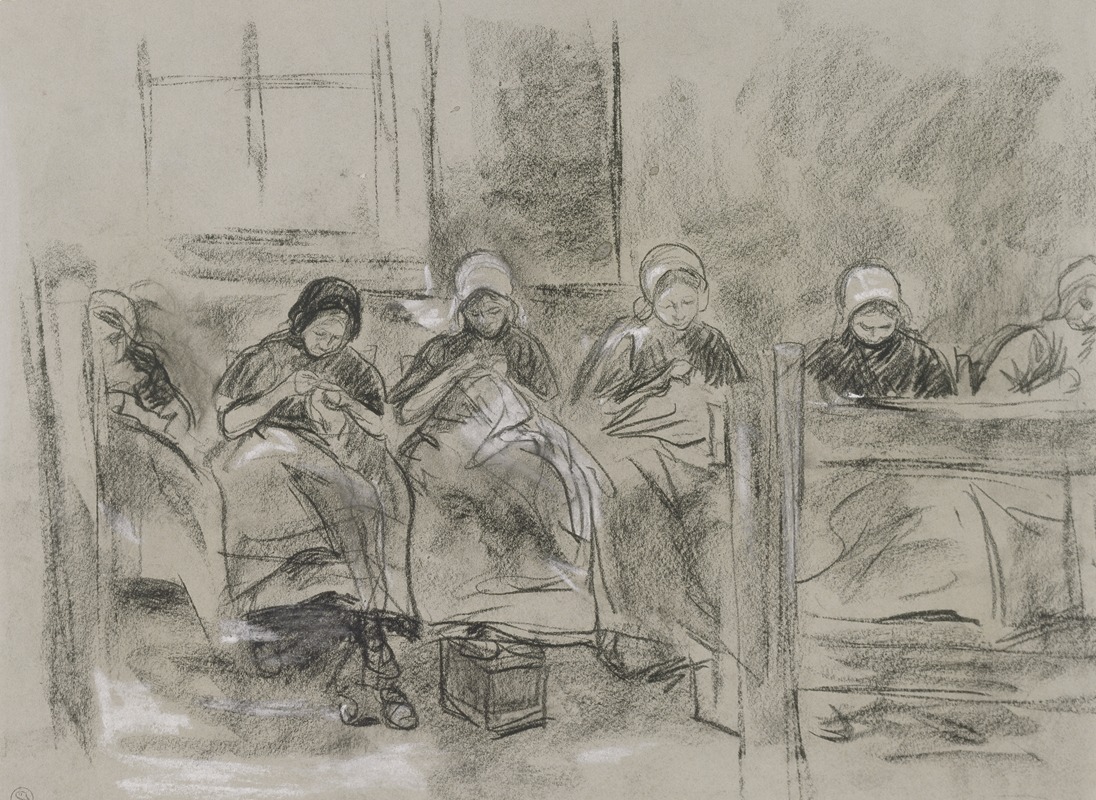
Sechs nähende holländische Mädchen vor einer Hauswand
A hand-painted replica of Max Liebermann’s masterpiece Sechs nähende holländische Mädchen vor einer Hauswand, meticulously crafted by professional artists to capture the true essence of the original. Each piece is created with museum-quality canvas and rare mineral pigments, carefully painted by experienced artists with delicate brushstrokes and rich, layered colors to perfectly recreate the texture of the original artwork. Unlike machine-printed reproductions, this hand-painted version brings the painting to life, infused with the artist’s emotions and skill in every stroke. Whether for personal collection or home decoration, it instantly elevates the artistic atmosphere of any space.
Max Liebermann's painting Sechs nähende holländische Mädchen vor einer Hauswand (translated as Six Dutch Girls Sewing in Front of a House Wall) is a work by the renowned German painter and printmaker Max Liebermann (1847–1935). Liebermann is widely recognized as a leading figure in German Impressionism and a key proponent of naturalism in art during the late 19th and early 20th centuries.
This painting, created in 1882, depicts six young Dutch girls seated outdoors, engaged in the act of sewing. They are positioned in front of a simple house wall, with the composition emphasizing their quiet, focused activity. The scene reflects Liebermann's interest in capturing everyday life and labor, particularly among rural and working-class communities. The artist often traveled to the Netherlands, where he found inspiration in the landscapes, light, and the lives of ordinary people. This painting is one of many works in which Liebermann portrayed Dutch rural life, a recurring theme in his oeuvre.
The painting is characterized by Liebermann's loose, impressionistic brushwork and his use of natural light to create a sense of realism and immediacy. The muted color palette and the simplicity of the setting draw attention to the figures and their activity, highlighting the dignity and quiet industriousness of the girls. Liebermann's approach to such subjects was influenced by earlier Dutch masters, such as Frans Hals and Rembrandt, as well as by the Barbizon School in France, which emphasized painting en plein air and depicting rural life.
Sechs nähende holländische Mädchen vor einer Hauswand is an example of Liebermann's commitment to portraying the beauty and humanity of everyday moments. The painting reflects his broader artistic philosophy, which sought to move away from idealized or historical subjects and instead focus on the authenticity of contemporary life.
The current location of the painting is not definitively documented in public sources, and its provenance may require further research. However, Liebermann's works are held in numerous major art institutions worldwide, including the Alte Nationalgalerie in Berlin and the Städel Museum in Frankfurt, as well as in private collections.
This painting remains an important example of Liebermann's early work and his dedication to capturing the essence of human experience through art.





